There were already obstacles when it came to building homes on the Navajo Nation. Accessing water and electricity, for instance. Or the ability for would-be homeowners to find a mortgage. Native Partnership for Housing (NPH), a NeighborWorks network organization working to create a path to affordable homeownership, had an additional obstacle: Finding the right construction crew to do the job.
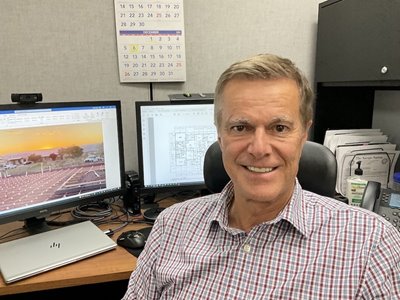
Wood says NPH had been hiring contractors who sometimes cut corners or disappeared altogether. "We would have to clean it up," he says of the work. "We looked in the mirror one day and said, 'We should be doing this ourselves.'" So they did.
Middle-income housing
The type of housing that's often missing on the Navajo reservation is housing for middle-income
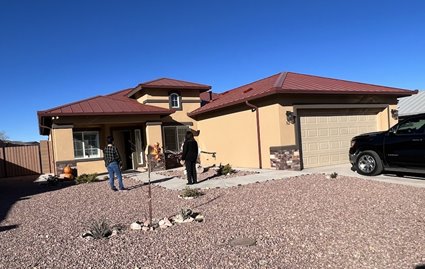 residents, Wood says. Nurses. Supervisors. IT crews. Judges. These are people the Navajo Nation needs, and NPH set out to make sure that those people, in turn, had homes to live in. The all-Native construction crew has helped them make a persistent dent in the housing landscape. They've built 29 homes in the last seven years, seven of them with Clear Water. There are five more homes in the pipeline, with 15 lots to go.
residents, Wood says. Nurses. Supervisors. IT crews. Judges. These are people the Navajo Nation needs, and NPH set out to make sure that those people, in turn, had homes to live in. The all-Native construction crew has helped them make a persistent dent in the housing landscape. They've built 29 homes in the last seven years, seven of them with Clear Water. There are five more homes in the pipeline, with 15 lots to go. "When the pandemic hit, more people were calling in," Otero says. "They wanted housing and they wanted it fast. If we had all the money in the world, we could build one house after another to provide housing. But we can't do everything without adequate funding." NPH referred those who wanted rentals or low-income housing to organizations in the city and to the
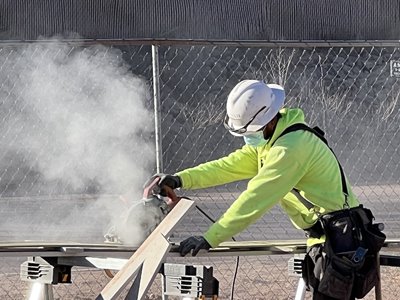 Navajo Housing Authority. Meanwhile, construction continued at Clear Water, as workers learned about the crew by word of mouth, sometimes walking up to the job site and asking to apply.
Navajo Housing Authority. Meanwhile, construction continued at Clear Water, as workers learned about the crew by word of mouth, sometimes walking up to the job site and asking to apply.Ervin Taylor was one of the first to join the Clear Water team. He's worked construction since the early 1990s, he says, but this team, working on the reservation where he also lives, has been the right fit. Wood and Otero "have the patience, they're willing to give you a chance," he says. They see beyond the worker's initial skills, too.
The team works well together, he adds. They're in sync. "There's good communication. Instead of knowing just one thing, they're learning to build a house from the ground up."
Navajo tribal enrollment has risent to nearly 400,000, according to the New York Times. Otero says younger Navajo often work in cities instead of on the reservation. "What's left are the grandmas, the aunts and uncles, the people working for the Navajo Nation, or working in the border towns," says Otero. "Those are the people NPH tries to help, the mid-income people who can afford to have homes built." But people who also need those homes to be affordable, a challenge on the reservation, where it costs more to build.
For low-income housing, the Navajo Nation has the Navajo Housing Authority, which faces its own challenges and barriers, Otero says, adding that she would like to see more organizations helping. "Nonnatives think the reservation is free land," she says. "It's not true. We're just managing living on and managing federal-controlled land."
Work and water
 In rural areas on the reservation, many homes still aren't connected to electricity and water. "It's remote," says Wood, who drives great distances to get supplies. "Coming in from Shiprock and heading toward Kayenta, you'll see a sign that says, 'No services for 200 miles.' There is nothing for 200 miles."
In rural areas on the reservation, many homes still aren't connected to electricity and water. "It's remote," says Wood, who drives great distances to get supplies. "Coming in from Shiprock and heading toward Kayenta, you'll see a sign that says, 'No services for 200 miles.' There is nothing for 200 miles." Navajo electrical subsidiaries are working on getting solar to some remote locations. Meanwhile, water is hauled, sometimes for miles, sometimes in combination with cisterns.
Another need on the reservation is for bathroom additions, made clearer by the COVID-19 pandemic when washing hands – constantly – was recommended as a way to protect against the virus' spread. And that opens another space for Clear Water to make a difference.
Earlier this year, the federal government earmarked $2 billion from the American Recovery and Rescue Act for the Navajo Nation. Of that funding, $140 million will be designated for bathroom additions, which would number in the thousands. The Navajo Engineering and Construction Authority (NECA), the construction arm of the Navajo Nation, will need subcontractors to help build those additions. NPH hopes Clear Water can serve as a subcontractor.
Over the last 50 years, NECA has put in water lines, "thousands and thousands of water lines," across the reservation, says Buu Van Nygren, NECA's chief commercial officer. Once funding moves down the line for the bathrooms, Nygren says they'll be looking for as many subcontractors as they can find. When he assessed homes on the reservation earlier in 2021, he estimated that as many as 10,000 could need restrooms.
Even with NECA's 500 employees, they don't have the capacity to do it alone, Nygren says. "And we don't have enough contractors here to do all of the work. Once this starts, we'll have to vamp up and find people quickly." Nygren says he's been looking for the right opportunity to partner with NPH and Clear Water. This project could be the start.
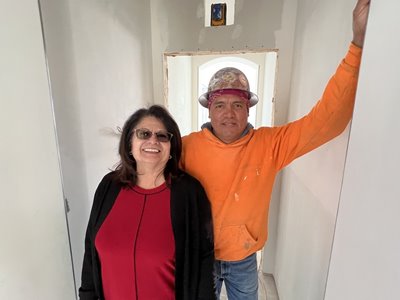
Nygren began talking to NPH six months ago after driving by Clear Water-constructed homes in St. Michaels. "They were doing an amazing job," he says. "These houses looked like they could be somewhere in Phoenix or Scottsdale. I wanted to know more." He toured the homes with Wood, and the two began discussing possibilities.
Wood's hope is to build 200 bathroom additions starting in January, once funding comes through. The bathrooms would go all over the reservation, for families that may have a mobile home or a Hogan with no running water. "We'd need to build them and position them against a home, and then seal it," says Wood. "This is a desperately needed project."
Nygren agrees. "There's a huge need for these additions with Navajo homes, especially with COVID," he says.
Kelsey Thompson is a community nutrition educator, assisting with contact tracing with the Public Health Nursing Department at Tsehootsooi Medical Center in Fort Defiance, Arizona.
She describes some of the spikes in COVID on the reservation over the past 19 months as being related – literally. "A lot of family members live in multi-generational homes," she says. "You might have eight to 15 people in a small space." When one person gets sick, so does the rest of the family. "A lot of it has to do with a lack of housing opportunities for our people."
Thompson has also been living in a multigenerational home – but that changes this month as she, her husband and their daughter move into one of the new homes built by Clear Water. This will be the first home they own themselves. "We're super excited. We've been saving for years. We are ready to finally own something that is ours."
Even as some things have slowed down during COVID, she says, her house has continued to go up. A grant from NPH helped with the closing costs.
Patience and perseverance
It can take years to get a homesite lease on the Navajo Nation. And if you get a homesite lease that isn't near infrastructure, it can be years before electricity and water reach it, Otero says. Her own parents waited decades.
As the Clear Water crew waits for word on the restroom project, they continue to build homes, mostly in the St. Michaels community. That reminds Otero of yet another challenge: Many of the homes on the reservation are not in traditional neighborhoods. That may mean that when NPH is applying for community-related grants, they're the proverbial square peg in the round hole. "The Navajo people are historically nomadic," Otero explains; there may be acres between neighbors.
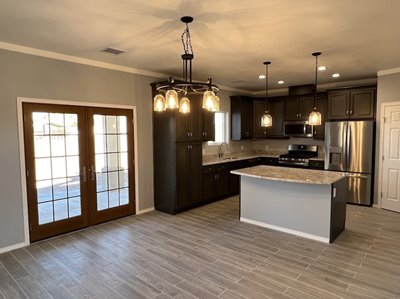 NPH's goal is to both help Native Americans who want to come back to the reservation and those who want to stay in the cities. Wood would like to see everyone get ahead. NPH has worked with individuals in Albuquerque, Phoenix and Seattle. "We help Natives wherever they live," Wood says. "We make things happen, against all odds."
NPH's goal is to both help Native Americans who want to come back to the reservation and those who want to stay in the cities. Wood would like to see everyone get ahead. NPH has worked with individuals in Albuquerque, Phoenix and Seattle. "We help Natives wherever they live," Wood says. "We make things happen, against all odds." In the cities, Otero shares, there are Natives who want to buy a house but don't know how. "We're trying to think about our people and that's the market we want to help. Maybe they want to buy a home in the city. Maybe they want a home or Hogan to continue their culture on the reservation.
"We want to empower them to be able to make their own personal choices," Otero adds. "With the younger generation, the culture is changing. But we're strong-willed people. We're going to hold onto our culture as much as we can."
Read other stories in this series.
Meeting challenges, creating homes: An introduction to some of the goals at Native Partnership for Housing, along with the challenges they face.
The first mortgage: Ron and Karen Maldonado talk about how they worked with Native Partnership for Housing to buy their home on the Navajo Nation.

